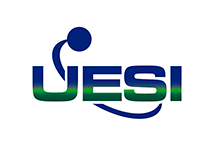Conducting ROV inspection services for underwater infrastructure in Alabama presents distinct challenges. From bridges over the Mobile River to culverts in the Black Belt and coastal structures along the Gulf, environmental, technical, and operational issues must be addressed to ensure dependable results. This article reviews the main difficulties affecting remote underwater visual inspections, subsea ROV surveys, and remotely operated vehicle evaluations, and explains how integrated providers like Underwater Engineering Services, Inc. (UESI) can help overcome them.
1. Environmental and Water Quality Conditions
Alabama’s rivers and coastal areas often create demanding environments for ROV inspection services.
- Low visibility and turbidity – Rivers such as the Tombigbee and Mobile carry heavy sediment after storms, reducing camera effectiveness. Even high-definition visuals may need sonar or acoustic support.
- Strong currents and flow changes – Bridges, dams, and flood-control structures can sit in swift or shifting currents, making it difficult for an ROV to maintain stable positioning for detailed subsea ROV surveys.
- Temperature and salinity layers – Near the coast, fresh and salt water mix, creating density gradients that can distort sonar readings unless sensors are carefully calibrated.
- Biofouling and debris – Barnacles, vegetation, and submerged objects can obstruct cameras or strike the vehicle, requiring pre-inspection cleaning and contingency plans.
These conditions demand versatile sensor packages that combine optical, sonar, and laser-based tools to maintain accuracy during remotely operated vehicle evaluations.
2. Sensor Integration and Data Accuracy
Combining multiple technologies on a single mission is another key challenge.
- Sensor fusion and synchronization – High-definition video, sonar imaging, and laser data must align perfectly in time and space. Poor calibration can cause misaligned models and reduce confidence in defect detection.
- Non-Destructive Testing (NDT) – Many asset owners require subsurface data. Deploying ultrasonic thickness gauging (UT), Time-Of-Flight Diffraction (TOFD), or magnetic particle testing from an ROV is technically complex but often essential.
- 3D modeling fidelity – Small calibration errors can become large inaccuracies when creating dimensional reconstructions, especially where tolerances are tight.
- Data management – A single subsea ROV survey can generate massive video and sonar files. Without robust processing and validation, delays or bottlenecks can undermine the value of quick deployment.
Reliable providers invest in strict calibration, data-validation protocols, and strong post-processing systems to ensure accurate results.
3. Logistical and Operational Barriers
Field conditions across Alabama add further complexity.
- Access and mobilization – Many structures sit in remote locations. Moving vessels, launch systems, and control vans through rural terrain or over levees can be difficult.
- Permitting and regulation – Work in navigable waters or protected wetlands may require multiple approvals, slowing schedules.
- Power and communications – Remote areas may lack stable power or data links for real-time control and monitoring.
- Weather and scheduling – Thunderstorms, hurricanes, and seasonal flooding can limit safe inspection windows and affect data quality mid-mission.
- Specialized crews – Skilled pilots, sensor operators, and analysts are critical. Recruiting and retaining them in rural regions can be harder than in large coastal hubs.
Careful planning and contingency strategies are essential to keep ROV inspection services on track.
4. Integration with Engineering and Maintenance
Collecting data is only part of the process. Turning it into actionable engineering insight is equally challenging.
- Bridging inspection and engineering – Structural engineers need validated measurements and clear defect characterizations, not just raw footage. Deliverables should include annotations, cross-sections, and repair recommendations.
- Trend analysis – To track deterioration, inspections must be consistent over time. Changing methods can make comparisons unreliable.
- Coordination with repairs – When serious damage is found, seamless transition from inspection to dive repair or structural reinforcement is critical.
- Cost and ROI – Some owners hesitate at the initial expense of integrated inspections unless the provider demonstrates savings through avoided outages or extended asset life.
Providers that embed inspections into full lifecycle planning deliver the most long-term value.
Role of Underwater Engineering Services (UESI)
Integrated firms like Underwater Engineering Services, Inc. (UESI) help Alabama infrastructure owners overcome these hurdles. UESI combines commercial diving, marine construction, inspection, and specialty engineering under one roof
- They manage permitting, mobilization, and logistics to reduce delays.
- Their engineers convert ROV data—video, sonar, and NDT—into actionable designs and repair plans.
- Because they also provide marine construction and repair, they streamline the shift from inspection to remediation.
- UESI’s rigorous protocols and quality controls ensure that data from remotely operated vehicle evaluations is accurate, validated, and ready for regulatory review.
This full-service approach helps infrastructure owners mitigate the inherent challenges of ROV inspection services.
Overcoming Challenges Related to ROV Inspections Services in Alabama
While ROV inspection services are an essential tool for maintaining Alabama’s underwater infrastructure, success depends on more than deploying a vehicle. Environmental factors, sensor integration, logistical obstacles, and the need to translate findings into engineering action all pose significant challenges.By partnering with experienced, multi-disciplinary providers—especially those offering integrated capabilities like UESI—owners can reduce uncertainty, streamline workflows, and ensure each remote underwater visual inspection, subsea ROV survey, and remotely operated vehicle evaluation delivers accurate, actionable, and high-value insights.




